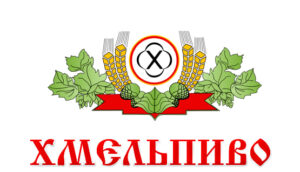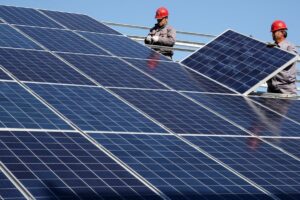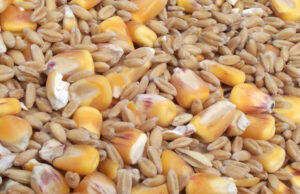
The state-owned Ukreximbank (Kyiv) provided a EUR 3.2 million loan to Kostopil Glassworks LLC (KSZ) to acquire a stake in the regional brewery PrJSC Khmelpyvo.
“The acquisition of a stake in PJSC Khmelpyvo will be a logical step in diversifying the business and optimizing production chains,” the bank said.
The financial institution emphasized that the financing is intended to support the Ukrainian glass container manufacturer in expanding its business and entering the beer market. The agreement will also contribute to strengthening vertical integration between the production of packaging containers and finished food products.
According to the NBU, as of April 2025, Ukreximbank ranked third in terms of total assets among 60 operating banks with UAH 311.8 billion. The bank’s net profit for the first quarter of 2025 increased by 26% to UAH 2.4 billion.
A large manufacturer of glass containers, Kostopil Glassworks (KZS, Rivne region), is in the process of acquiring PJSC Khmelnytsky Regional Brewery (Khmelpyvo, TM Proskurivske, Khmelnytske), a regional beer producer.
As reported, on May 22, the Antimonopoly Committee of Ukraine granted KZS permission to acquire control over PJSC Khmelpyvo. According to the information disclosure system of the National Securities and Stock Market Commission, the main shareholder of Khmelpyvo, with a 78.0286% stake, is the company’s director, Oleksandr Lysyuk. The company has convened an extraordinary shareholders’ meeting on June 13, at which the supervisory board headed by Lysyuk will be dismissed and replaced by a new one headed by the chairman of the Federation of Employers of Ukraine, Dmytro Oliynyk, who owns 19.46% of KZS and, together with his family, 49.53%.
In 2024, Khmelpyvo increased its revenue by 2.8% to UAH 146.41 million and reduced its net profit by 3.9% to UAH 76.86 million. At the meeting on April 8 this year, the issue of allocating all profits to the technical re-equipment of the company was raised.
At the beginning of this year, its equity capital amounted to UAH 547.97 million, cash – UAH 326.04 million, assets – UAH 559.4 million, and the number of employees – 125.
Kostopil Glassworks is one of the largest industrial enterprises in the Rivne region and is one of the five largest manufacturers of glass containers in Ukraine. The company ended 2024 with a net profit of UAH 76.5 million, which is 6.6 times less than in 2023, and its net income decreased by 18% to UAH 1 billion 467.8 million.
The main products of KSZ are beverage containers (91% of last year’s production), with bottles accounting for 9%. According to the plant, last year 51% of its products (UAH 755.3 million) were exported, in particular to Poland, Hungary, Romania, Bulgaria, Slovakia, Moldova, Lithuania, Latvia, and Estonia.
KZS reported that it plans to increase glass container production by 10-15% annually and increase sales accordingly. As of early 2025, the plant employed 503 people.
According to YouControl, Oliinyk owns 19.46% of KZS LLC, his family members Tetyana, Kyrylo, and Ivan Oliinyk own 16.27% and 6.9% respectively, another 22% belongs to the Bulgarian company Fisherman Investments, 9.06% to Andriy Rybitsky, 4.85% each to Anatoliy Kucheruk, Leonid Smilyanets, Andriy Filimonuk, and a private enterprise, the Sava firm.

Since the beginning of 2025, the state-owned Oschadbank has signed loan agreements with large corporate businesses worth EUR 87 million for the implementation of energy projects, which is almost twice as much as in the whole of last year, according to a press release issued by the bank on Friday.
“While in 2024, 70% of the projects we financed were gas piston generation, in 2025, 50% of the projects will be energy storage facilities and 40% will be wind power generation,” said Yevhen Myachyn, director of the corporate business development and support department at Oschadbank, at the Energy Club forum ” Consumer-Oriented Energy System” in Kyiv.
According to him, the stabilization of the energy system, changes in gas prices and reserves have encouraged businesses to shift their focus to technologies that look more promising in the long term.
Oschadbank estimates its share of the energy loan market in Ukraine at 30% according to NBU statistics, which show that from June 1, 2024, to May 25, 2025, banks provided loans and opened limits for energy projects worth UAH 18.2 billion, or more than 705 MW of generation capacity.
“Oschadbank also continues to maintain its leading position in financing companies in the energy sector. According to the results of the first four months of 2025, Oschadbank’s share is 32%,” the state-owned financial institution emphasizes.
According to the National Bank of Ukraine, as of the beginning of 2025, Oschadbank ranked second in terms of total assets (UAH 963.39 billion, or 12.4%) among 61 banks in the country.

The Antimonopoly Committee of Ukraine (AMCU) fined the pharmacy chain Med-Service Dnipro (Dnipro) UAH 101,000 for failing to submit information on time regarding drugs for the treatment of acute rhinitis.
According to the AMCU, the decision was made on June 12.
During the investigation of the case, which was initiated on the grounds of violation of the legislation on the protection of economic competition in the market of medicines that can be used to treat acute rhinitis, the committee sent a request to the pharmacy to provide information on the interchangeability of medicines within 10 days, but Med-Service Dnipro responded with a delay of seven days.
When determining the amount of the fine, the AMCU took into account mitigating circumstances and the absence of intent in the actions of the pharmacy chain.
Med-Service DNEPR LLC, EDRPOU code 41606497, was registered in 2017. 90% of the company is owned by Med-Service Group LLC.
The ultimate beneficiary is Oleg Tokarev.

Oil prices are rising sharply on Friday morning on news of Israeli strikes on Iran.
The price of August Brent futures on the London ICE Futures exchange rose by $5.8 (8.36%) to $75.16 per barrel as of 8:11 a.m. On Thursday, these contracts fell by $0.41 (0.59%) to $69.36 per barrel.
WTI crude oil futures for July delivery on the New York Mercantile Exchange (NYMEX) rose by $5.91 (8.69%) to $73.95 per barrel. At the end of Thursday’s session, the value of these contracts decreased by $0.11 (0.16%) to $68.04 per barrel.
The Israeli Air Force launched dozens of strikes on nuclear and missile sites in Iran on Thursday, according to the Axios portal.
“Israeli Defense Minister Israel Katz announced a state of emergency throughout the country and said: ‘Following the State of Israel’s preemptive strike against Iran, a missile attack and drone attack against the State of Israel and its civilian population is expected in the near future,’” the portal reported.
A representative of the Israel Defense Forces (IDF) told reporters that the operation to destroy Iran’s nuclear capabilities and ballistic missile capabilities would last several days.
The official explained that in recent weeks, “signs have emerged” that Iran is seeking to build a nuclear bomb.
“We are now in a strategically advantageous position and close to the point of no return, and we had no choice but to take action,” he said.
The prospect of an escalating conflict in the Middle East threatens shipping in the Strait of Hormuz, a key route for about 20% of global oil supplies, according to Trading Economics.

The US Department of Agriculture (USDA) has improved its forecast for global wheat and corn production in the 2025-2026 marketing year, with no change to its harvest forecast for Ukraine.
According to the forecast on the US agency’s website, the wheat harvest in Ukraine is estimated at 23 million tons, exports at 16.5 million tons, and ending stocks at 1.49 million tons. The corn harvest is expected to reach 30.5 million tons, with exports at 24 million tons and final stocks at 0.6 million tons.
At the same time, global wheat production in 2025/2026 MY will amount to 808.5 million tons (+0.07 million tons compared to last season), exports – 214.33 million tons (+1.34 million tons), and final stocks – 262.76 million tons (-2.97 million tons).
USDA analysts forecast global corn production in 2025/2026 MY at 1,265.98 million tons (+1 million tons compared to the previous season), global exports at 195.81 million tons (+0.01 million tons), and ending stocks at 275.24 million tons (-2.6 million tons).

Ukrzaliznytsia plans to change average transportation speeds for grain cars starting June 16, according to Valery Tkachov, deputy director of the commercial department at Ukrzaliznytsia (UZ) Valery Tkachov during an online meeting with participants in the agricultural market.
He noted that for grain cars of the Center for Transport Logistics branch of JSC Ukrzaliznytsia on domestic and import transportation, the speed for car dispatch will be 111 km/day, for route trains — 258 km/day; for export transportation via land crossings — 144 km/day and 217 km/day, respectively; for export transportation to port stations — 189 km/day and 323 km/day, respectively.
Tkachov added that these transport speeds will be taken into account exclusively when calculating the cost of using Ukrzaliznytsia JSC wagons.